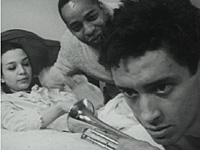|
||||||||||||||||||||||||||
| Theatre & Performance Studies - THSTA23525 | ||||||||||||||||||||||||||
This plan is only available to students commencing from 2009 onwards
The Minor in Theatre and Performance Studies covers the theoretical and historical study of a wide range of human performance in the arts with a focus on contemporary forms of theatre and dance in Europe and Australasia. It is distinguished by an emphasis on engaging with disparate modes of performance – theatrical and cultural, European and Asian, contemporary and historical, text and non-text based, low and high culture – through a combination of both concept-driven and experiential learning. While the primary objects of study in the Minor are theatre and dance, they are regarded in terms of their production of meanings, subjects, and social relations. Practical work is therefore undertaken in the BA program not to train students as professional practitioners, but in order that they may develop an informed critical language for the discussion and analysis of theatre and dance as areas of performance and reach a fuller appreciation of the production process and construction of meaning in the respective media. The subject-specific aims of the BA Minor in TPS are:
A student who wishes to gain a Minor in Theatre and Performance Studies must complete 36 units of credit including 12 uoc at Level 1, at least 12 uoc at Level 2 and at least 12 uoc at Level 3.
Level 1
Level 2
Level 2 offers electives that introduce a diverse range of critical perspectives relevant to contemporary theatre and performance studies, as well as the latest developments in repertoire and performance practice. Level 2 also provides both theory-based and practical courses which provide opportunities to further explore these critical perspectives through fields of study such as: acting and performing, comedy and popular culture, Australian drama and theatre, and the staging and writing of performance texts.
Level 3
Level 3 courses introduce the study of performance from diverse cultural and historical contexts, as well as the issues at stake for performance in contemporary Western mediatised culture. It also offers courses specialising in non-text based, hybrid and/or multimedia forms, including live art, dance theatre and physical theatre. In addition, level 3 contains intensive practical courses that offer opportunities for developing skills in research-based solo and ensemble performance making.
|
||||||||||||||||||||||||||



